
Summer is a wonderful time for children to get outdoors and make the most of the warmer weather and beautiful sunshine. Outside in the fresh air, little ones can enjoy a bit of freedom, let their imaginations take over, get creative, and benefit in a whole range of different ways. Immersing themselves in play outdoors is also an escape from electronic screens, man-made toys, and the many restrictions associated with being indoors. Additionally, it teaches them new skills. With that in mind, today’s post outlines 10 different outdoor activities that children, including those under five*, can enjoy this summer and potentially even longer, weather permitting. What’s more, most of the ideas are free of any cost! Take a look.
1. Create a Rustic Playden!
 Home-made play dens are great fun both to construct and to use. Children will love constructing them, perhaps using fallen branches, sticks, or garden bamboo canes. If they show real ‘bush craft’ potential, they could even progress to covering them with large leaves, moss, fir tree fronds, or simply use a spare blanket or sheet from indoors. Once made, children will adore setting up camp, perhaps with cushions or soft moss, straw, or hay, used as a comfy base inside. Once built, their imaginations will run riot as they invent all kinds of games, role-play scenarios, and free-form play. This creative activity is such fun and has so much potential!
Home-made play dens are great fun both to construct and to use. Children will love constructing them, perhaps using fallen branches, sticks, or garden bamboo canes. If they show real ‘bush craft’ potential, they could even progress to covering them with large leaves, moss, fir tree fronds, or simply use a spare blanket or sheet from indoors. Once made, children will adore setting up camp, perhaps with cushions or soft moss, straw, or hay, used as a comfy base inside. Once built, their imaginations will run riot as they invent all kinds of games, role-play scenarios, and free-form play. This creative activity is such fun and has so much potential!
2. Make & Sail a Paper Boat or Stick Raft!
 With a little help from an adult or using suitable reference from the Internet or a book, children will be able to make little paper boats or, alternatively, construct little stick rafts. If they’re old enough and are accompanied by an adult for safety, they’ll be able to float these in a puddle, pond, paddling pool, or local stream, which will be great fun and also give them a huge sense of achievement. If too young to be near water, they can simply use their imaginations to ‘float’ their boats on dry land — perhaps a flattened sheet of tin foil from the kitchen could, for example, be used to represent a pond. Follow the bold links for easy examples that show how easy it is to make a paper boat or stick raft. With this activity, they’ll stimulate imaginations as well as hone motor skills.
With a little help from an adult or using suitable reference from the Internet or a book, children will be able to make little paper boats or, alternatively, construct little stick rafts. If they’re old enough and are accompanied by an adult for safety, they’ll be able to float these in a puddle, pond, paddling pool, or local stream, which will be great fun and also give them a huge sense of achievement. If too young to be near water, they can simply use their imaginations to ‘float’ their boats on dry land — perhaps a flattened sheet of tin foil from the kitchen could, for example, be used to represent a pond. Follow the bold links for easy examples that show how easy it is to make a paper boat or stick raft. With this activity, they’ll stimulate imaginations as well as hone motor skills.
3. Create Beautiful Rock Art

 Rocks, particularly the smooth pebble kind, are often magnets for children’s attention when they spot them outdoors. Parents and carers can encourage children to take their natural interest a few steps further by creating rock art and rock sculpture (using, of course, suitable rocks that are safe for them to use under supervision). Children will love painting rocks with patterns, flowers, or abstract designs and these can look hugely attractive. Rock sculptures are also something that children will love building, whether using painted rocks or natural ones. Scenes with multiple ‘towers’ of piled rocks look magical and children can even pretend these are part of their ‘castle’ or mark the boundaries of their kingdom and suchlike. Creating outdoors with rocks will be fun and creative, it’ll stimulate imaginations, and also hone art and motor skills.
Rocks, particularly the smooth pebble kind, are often magnets for children’s attention when they spot them outdoors. Parents and carers can encourage children to take their natural interest a few steps further by creating rock art and rock sculpture (using, of course, suitable rocks that are safe for them to use under supervision). Children will love painting rocks with patterns, flowers, or abstract designs and these can look hugely attractive. Rock sculptures are also something that children will love building, whether using painted rocks or natural ones. Scenes with multiple ‘towers’ of piled rocks look magical and children can even pretend these are part of their ‘castle’ or mark the boundaries of their kingdom and suchlike. Creating outdoors with rocks will be fun and creative, it’ll stimulate imaginations, and also hone art and motor skills.
4. Create a Cosy Picnic
 Children will love creating their own picnic, whether it’s in the garden, local park, or out in the countryside. It’s a multi-faceted activity where they can first help prepare the food and drink, help pack it in backpacks or a cool bag, and then settle somewhere pleasant outdoors. There, they can set up camp, perhaps with a nice soft blanket to sit on, and lay out their picnic feast. It’ll be a great spot, too, to relax with friends or family, or use as a base from which to embark on other outdoor games and activities. Picnics are also a great way to extend the time children can spend outdoors because they’ll be fed and watered outside too. Magical!
Children will love creating their own picnic, whether it’s in the garden, local park, or out in the countryside. It’s a multi-faceted activity where they can first help prepare the food and drink, help pack it in backpacks or a cool bag, and then settle somewhere pleasant outdoors. There, they can set up camp, perhaps with a nice soft blanket to sit on, and lay out their picnic feast. It’ll be a great spot, too, to relax with friends or family, or use as a base from which to embark on other outdoor games and activities. Picnics are also a great way to extend the time children can spend outdoors because they’ll be fed and watered outside too. Magical!
5. Introduce Children to Rambling
 Introduce children to the concept of rambling. It’s a term that also sounds much more interesting than ‘walking’ in any case, and is a great excuse to get little ones out and about, for example, in the countryside, local park, or green space. Rambling out in nature is good for children (and adults) and also presents lots of exciting opportunities for adventure for little ones. Whether it’s a fallen log that children can try to walk along, tree stumps that they can balance on, branches they can try to hang from by their arms, or little brooks and ditches that they can jump across, rambles can be wonderful adventures for children — under adult supervision, of course. They’re also great ways to stimulate imaginations as children can pretend they’re explorers, pirates, hobbits, and so on.
Introduce children to the concept of rambling. It’s a term that also sounds much more interesting than ‘walking’ in any case, and is a great excuse to get little ones out and about, for example, in the countryside, local park, or green space. Rambling out in nature is good for children (and adults) and also presents lots of exciting opportunities for adventure for little ones. Whether it’s a fallen log that children can try to walk along, tree stumps that they can balance on, branches they can try to hang from by their arms, or little brooks and ditches that they can jump across, rambles can be wonderful adventures for children — under adult supervision, of course. They’re also great ways to stimulate imaginations as children can pretend they’re explorers, pirates, hobbits, and so on.
6. Nature Treasure Hunts
 Nature ‘treasure’ or ‘scavenger’ hunts are great fun, and also educational, for children. For example, challenge them to find a pine cone, a round stone, a rock with a hole in it, a red leaf, another that’s orange, and another that’s brown, flowers similarly in different colours, a winged seed (like that of a sycamore or acer tree), a conker, a sunflower, fruit like apples, pears, or plums on a tree, cereal seeds growing in a field, and so on.
Nature ‘treasure’ or ‘scavenger’ hunts are great fun, and also educational, for children. For example, challenge them to find a pine cone, a round stone, a rock with a hole in it, a red leaf, another that’s orange, and another that’s brown, flowers similarly in different colours, a winged seed (like that of a sycamore or acer tree), a conker, a sunflower, fruit like apples, pears, or plums on a tree, cereal seeds growing in a field, and so on.
7. Set Up an Obstacle Race
 Children will also hugely enjoy making and then competing in their own obstacle race. Encourage them to set up a route through a suitable clearing, forest, field or park. Get them to mark boundaries and the course route with natural objects (sticks, rocks, stones, jumpers, etc.). Include obstacles like branches to jump over, tree trunks to run around, ditches or other similar hazards to jump over, and so on. Perhaps they can race several times and you, as the supervising adult, can time them. Whoever wins could be presented with a prize of some kind, whether it’s a purchased toy or simply a gold star sticker. It’ll be a great chance for children to let off steam, keep fit, and hone balance, coordination and motor skills.
Children will also hugely enjoy making and then competing in their own obstacle race. Encourage them to set up a route through a suitable clearing, forest, field or park. Get them to mark boundaries and the course route with natural objects (sticks, rocks, stones, jumpers, etc.). Include obstacles like branches to jump over, tree trunks to run around, ditches or other similar hazards to jump over, and so on. Perhaps they can race several times and you, as the supervising adult, can time them. Whoever wins could be presented with a prize of some kind, whether it’s a purchased toy or simply a gold star sticker. It’ll be a great chance for children to let off steam, keep fit, and hone balance, coordination and motor skills.
8. Arrange a Photography Challenge
 Little ones are usually familiar with the concept of photographs, especially in today’s age, with cameras on every smartphone and tablet. And, of course, there are still simple stand-alone cameras available, whether digital or using traditional film. Either way, suggest that children — with care not to break or damage the device — take photos of natural things and scenery when they’re outdoors. There could even be a competition to see who can take the best photo of a flower, insect, or scene of some kind. This activity will stimulate their creativity, encourage an understanding of scientific concepts like light and shadows, and give them a sense of responsibility as they (hopefully) look after the camera or smartphone itself. Prizes or stickers could perhaps be available for the most successful and appealing shots.
Little ones are usually familiar with the concept of photographs, especially in today’s age, with cameras on every smartphone and tablet. And, of course, there are still simple stand-alone cameras available, whether digital or using traditional film. Either way, suggest that children — with care not to break or damage the device — take photos of natural things and scenery when they’re outdoors. There could even be a competition to see who can take the best photo of a flower, insect, or scene of some kind. This activity will stimulate their creativity, encourage an understanding of scientific concepts like light and shadows, and give them a sense of responsibility as they (hopefully) look after the camera or smartphone itself. Prizes or stickers could perhaps be available for the most successful and appealing shots.
9. Set Up & Maintain a Mini Garden Area
 Children will love having their own mini garden. Whether it’s a small area in the household garden or simply some flowerpots or grow-bags on a windowsill or patio, there is always somewhere a child can grow plants (or even vegetables or herbs) in a household. All they need is some light, soil, and water, after all. And, of course, the care and attention of someone to look after them. Children will naturally be fascinated by the concept of growing plants, flowers, herbs, vegetables, or fruit from seeds or seedlings. Tending to them and seeing them successfully grow will also give them a sense of responsibility, achievement, and perhaps even of empathy. Children can learn so much from tending to plants.
Children will love having their own mini garden. Whether it’s a small area in the household garden or simply some flowerpots or grow-bags on a windowsill or patio, there is always somewhere a child can grow plants (or even vegetables or herbs) in a household. All they need is some light, soil, and water, after all. And, of course, the care and attention of someone to look after them. Children will naturally be fascinated by the concept of growing plants, flowers, herbs, vegetables, or fruit from seeds or seedlings. Tending to them and seeing them successfully grow will also give them a sense of responsibility, achievement, and perhaps even of empathy. Children can learn so much from tending to plants.
10. Spot Wonderful Wildlife
 Our final outdoor activity idea for children is wildlife spotting. Whether it’s birds, bees, insects, minibeasts, butterflies, or mammals, there are always creatures of one form or another for children to discover if they know where to look. Our free identification posters will help too, so download those (click the bold links earlier in this paragraph) and print them out for children to use as a visual reference. They can then go on an outdoor ‘safari’ of sorts — it’ll be a fun, exciting, and educational adventure and it’ll open children’s eyes to some of the delightful creatures that they share the planet with.
Our final outdoor activity idea for children is wildlife spotting. Whether it’s birds, bees, insects, minibeasts, butterflies, or mammals, there are always creatures of one form or another for children to discover if they know where to look. Our free identification posters will help too, so download those (click the bold links earlier in this paragraph) and print them out for children to use as a visual reference. They can then go on an outdoor ‘safari’ of sorts — it’ll be a fun, exciting, and educational adventure and it’ll open children’s eyes to some of the delightful creatures that they share the planet with.
TIP! Children will see more wildlife if they make their gardens wildlife-friendly. Follow our guide to making a wildlife-friendly garden with your child for more information.
Outdoor Play is Good for Children
These are all simple and mostly free ideas for activities that children can take part in outdoors during the warmer months of the year. They’re fun and exciting, and many add a bit of adventure to children’s lives. Outdoor play is incredibly important to children and nature is incredibly beneficial to little ones too, so these outdoor activities can be profoundly impactful for children and can enrich their lives. Have fun, and stay safe.
* Safety Notice
* Before embarking on any outdoor activity with a child, always consider safety first and a responsible adult should supervise them, especially near hazards, water, etc.
Our High-Quality Childcare Service in Streatham
Little Cedars Day Nursery (Streatham, SW16) – for Weekday Childcare & a Good Early Years Education


We hope our outdoor activities today give parents and those caring for children some food for thought — and that children enjoy them as much as we think they will. Little Cedars Day Nursery is in Streatham, SW16, and offers a high-quality weekday childcare service for children under five. More than that, though, we give children good foundations in their ‘early years’ education, setting them up well for when they start school. In this way, they’re primed for success and ready to thrive!
Little Cedars Nursery is also near Furzedown, Tooting, Norbury, Balham, and Colliers Wood, so it may also suit families from those locations. We support many Government-funded free childcare schemes too.
Register your child for a nursery place at Little Cedars Nursery today, request a free tour, or ask any questions — we’ll be happy to help:
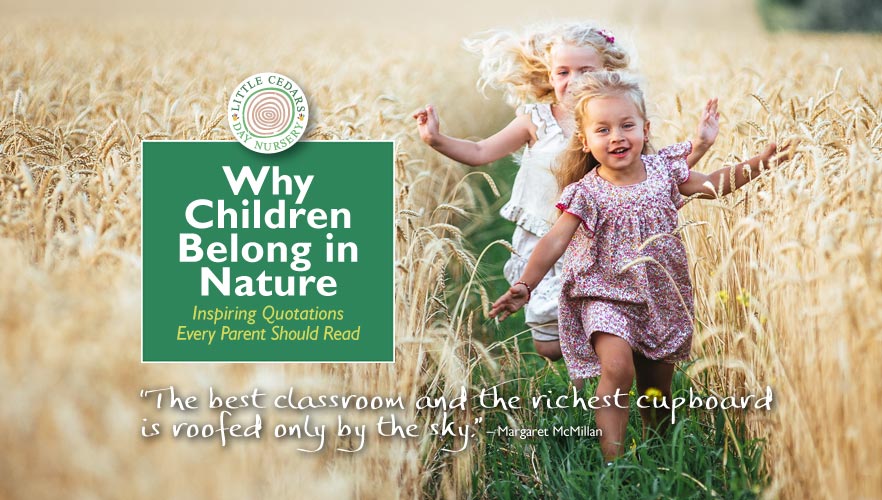

 Little Cedars Day Nursery, Streatham, encourages children to get closer to nature — we know how profoundly beneficial it is to them. As well as being close to local natural spaces like Tooting Common, children at Little Cedars are also able to grow seedlings, vegetables, and plants in the nursery’s very own planting area. Growing their own gives them a whole raft of new skills, teaches them about nature, the world, and the circle of life. It is also a wonderfully hands-on way to show little ones where food comes from — and that they can grow their own with some care, responsibility and nurturing. Nature is a wonderful teacher!
Little Cedars Day Nursery, Streatham, encourages children to get closer to nature — we know how profoundly beneficial it is to them. As well as being close to local natural spaces like Tooting Common, children at Little Cedars are also able to grow seedlings, vegetables, and plants in the nursery’s very own planting area. Growing their own gives them a whole raft of new skills, teaches them about nature, the world, and the circle of life. It is also a wonderfully hands-on way to show little ones where food comes from — and that they can grow their own with some care, responsibility and nurturing. Nature is a wonderful teacher!
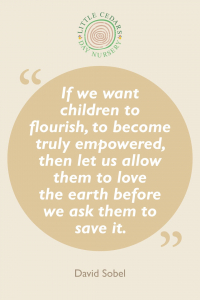
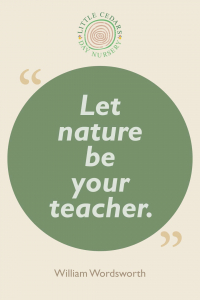
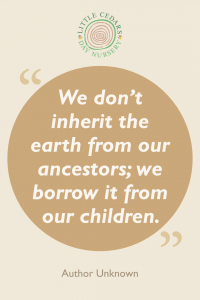
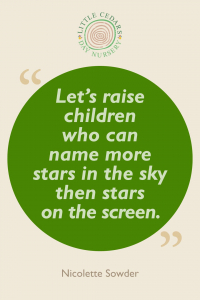
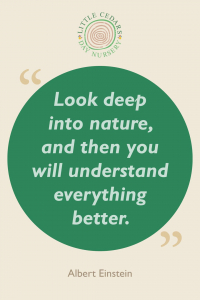
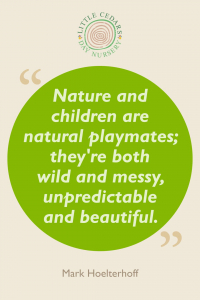
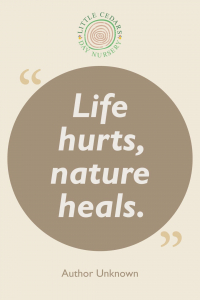
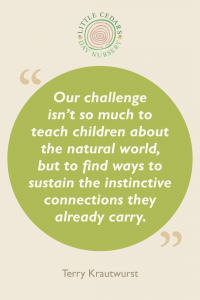
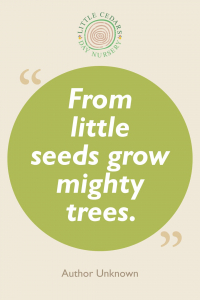
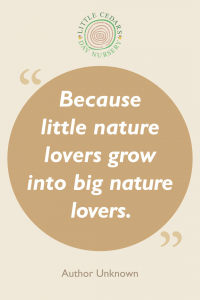
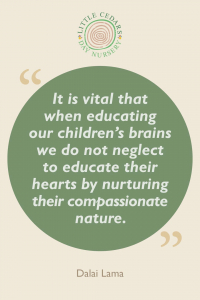

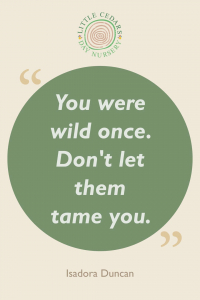

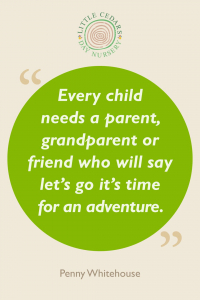

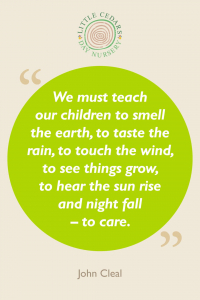

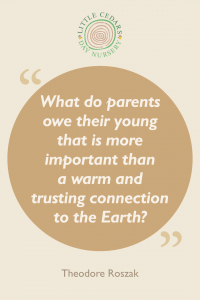

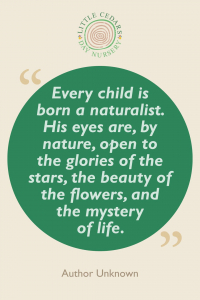
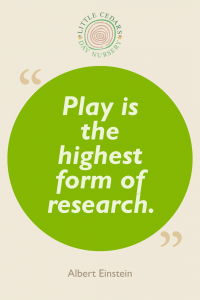
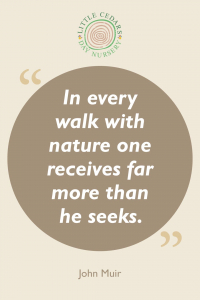

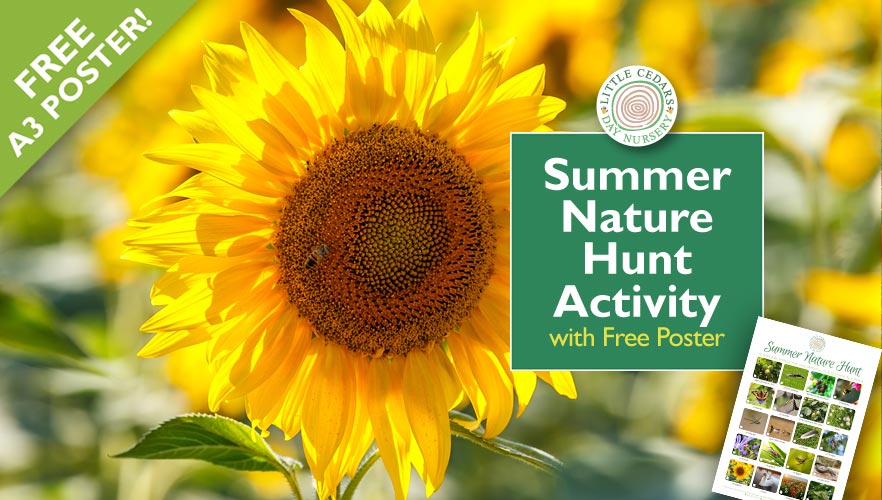
 Summer is in full swing from late June until late September*. It’s a wonderful season that brings with it many amazing things for children and families to look out for in nature. Indeed, that’s what today’s suggested activity is all about. We’ve created a free-to-download poster that highlights 20 things from nature that children, including under-fives, can look out for when they’re outdoors†. Whether it’s in gardens, on walks with family members, at the park, or out in the countryside, summer’s natural wonders are incredibly abundant when you take time to look.
Summer is in full swing from late June until late September*. It’s a wonderful season that brings with it many amazing things for children and families to look out for in nature. Indeed, that’s what today’s suggested activity is all about. We’ve created a free-to-download poster that highlights 20 things from nature that children, including under-fives, can look out for when they’re outdoors†. Whether it’s in gardens, on walks with family members, at the park, or out in the countryside, summer’s natural wonders are incredibly abundant when you take time to look.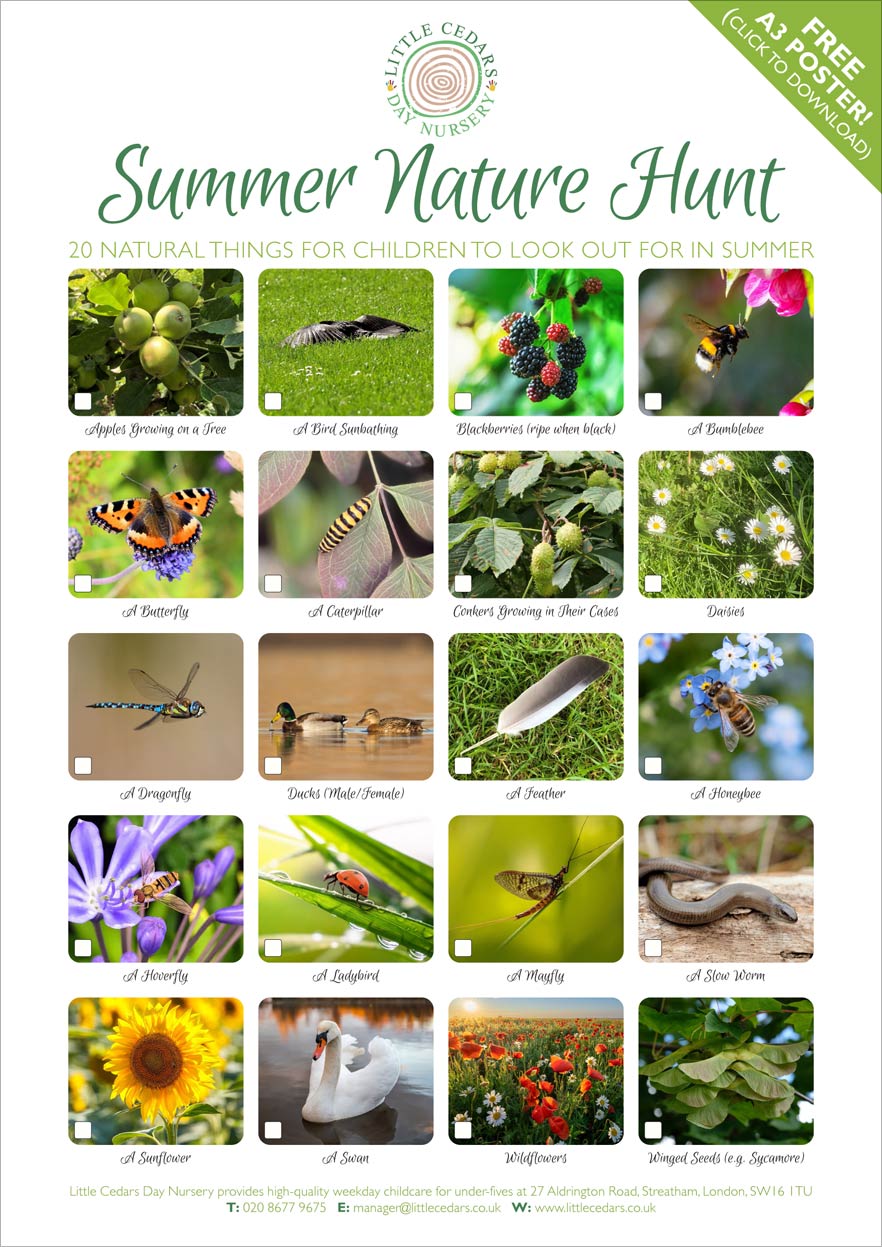

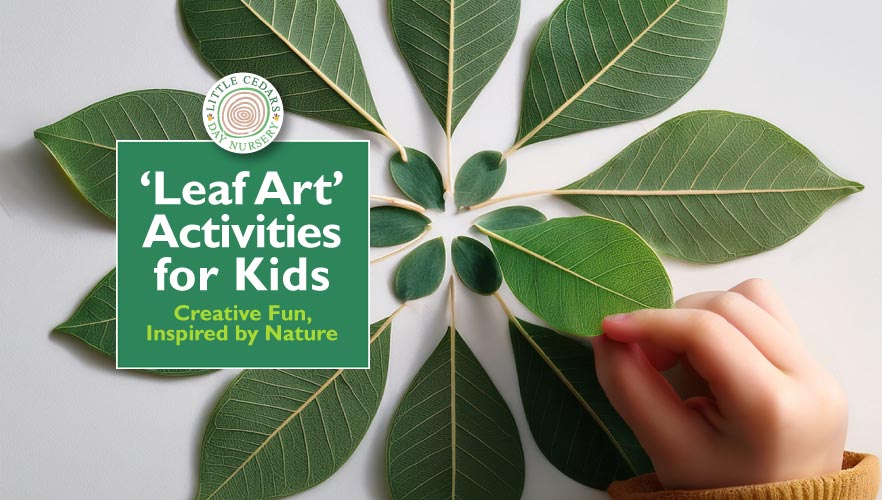
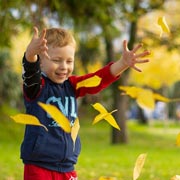 With warmer weather and plants and trees flourishing wherever we look, it got us thinking about some creative children’s activities, inspired by nature. One simple starting point is the humble leaf, which can lend itself to a surprisingly wide range of creative activities for children to enjoy. Such activities will not only draw children’s attention to
With warmer weather and plants and trees flourishing wherever we look, it got us thinking about some creative children’s activities, inspired by nature. One simple starting point is the humble leaf, which can lend itself to a surprisingly wide range of creative activities for children to enjoy. Such activities will not only draw children’s attention to  The first thing children will need is, of course, a selection of suitable leaves. To give them enough scope for a wide range of creative activities, we suggest families forage a variety of different sizes and shapes. We suggest focusing primarily on tree leaves as these are likely to be fairly robust, come in lots of different forms, and often have well-defined ‘vein’ structures. Oak leaves, sycamore, beech, hawthorn, horse chestnut, lime, sweet chestnut and silver birch would represent a nicely varied selection, for example. Download our
The first thing children will need is, of course, a selection of suitable leaves. To give them enough scope for a wide range of creative activities, we suggest families forage a variety of different sizes and shapes. We suggest focusing primarily on tree leaves as these are likely to be fairly robust, come in lots of different forms, and often have well-defined ‘vein’ structures. Oak leaves, sycamore, beech, hawthorn, horse chestnut, lime, sweet chestnut and silver birch would represent a nicely varied selection, for example. Download our  One of the most straightforward activities using leaves is for children to simply paint them. The youngest will love painting one side of each leaf in a different colour — or even adorn them with patterns like spots, zigzags, hearts, and stripes. Once the paint is dry, the leaves can be used in a variety of different ways. For example, they could be glued into an attractive design on a sheet of paper/card and displayed in a frame, made into a garland for the wall, bunched together to form an attractive hand-held fan, glued to a circle of paper or card to form an attractive crown, or glued to an upturned stick or tree sprig to represent a colourful tree. These are just a few ways they can be used once painted and, indeed, coming up with ideas is all part of the fun and creativity for children!
One of the most straightforward activities using leaves is for children to simply paint them. The youngest will love painting one side of each leaf in a different colour — or even adorn them with patterns like spots, zigzags, hearts, and stripes. Once the paint is dry, the leaves can be used in a variety of different ways. For example, they could be glued into an attractive design on a sheet of paper/card and displayed in a frame, made into a garland for the wall, bunched together to form an attractive hand-held fan, glued to a circle of paper or card to form an attractive crown, or glued to an upturned stick or tree sprig to represent a colourful tree. These are just a few ways they can be used once painted and, indeed, coming up with ideas is all part of the fun and creativity for children!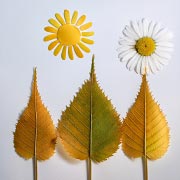 Collages made from leaves can also be very easy for children to accomplish; they just need a base card or paper, child-safe glue, some leaves and perhaps some flowers too. Ideally, leaves should be flat and, even better, dried. This can be achieved through pressing, which is explained later. For added beauty, add fresh or pressed flowers of different colours too — perhaps even other items like stars and glitter. Children can then gradually build up an attractive design (rather like organic wallpaper) or a simple picture like our example. It will result in a fascinating piece of leaf and flower art that can be displayed in the home — something for children to be proud of!
Collages made from leaves can also be very easy for children to accomplish; they just need a base card or paper, child-safe glue, some leaves and perhaps some flowers too. Ideally, leaves should be flat and, even better, dried. This can be achieved through pressing, which is explained later. For added beauty, add fresh or pressed flowers of different colours too — perhaps even other items like stars and glitter. Children can then gradually build up an attractive design (rather like organic wallpaper) or a simple picture like our example. It will result in a fascinating piece of leaf and flower art that can be displayed in the home — something for children to be proud of! A freshly painted leaf can also be used to make leaf prints. When the paint is still very wet, children should simply turn their leaves over and press all areas of them against a sheet of paper or card. Doing this by hand is OK but if you have a roller, even better! In this way, the paint is transferred to the sheet and will typically show the leaf shape and all the structural veins of the donor leaf. And, by repeating the process with one or more leaves and colours, a design or picture can be gradually built up on the sheet. This might be as simple as a repeat pattern or as complex as a pictorial scene. By adding other media like painted or drawn lines, leaf prints could, for example, represent a forest on a hillside. Add little figures of people and perhaps little dogs underneath each ‘tree’ and it’ll start to come to life!
A freshly painted leaf can also be used to make leaf prints. When the paint is still very wet, children should simply turn their leaves over and press all areas of them against a sheet of paper or card. Doing this by hand is OK but if you have a roller, even better! In this way, the paint is transferred to the sheet and will typically show the leaf shape and all the structural veins of the donor leaf. And, by repeating the process with one or more leaves and colours, a design or picture can be gradually built up on the sheet. This might be as simple as a repeat pattern or as complex as a pictorial scene. By adding other media like painted or drawn lines, leaf prints could, for example, represent a forest on a hillside. Add little figures of people and perhaps little dogs underneath each ‘tree’ and it’ll start to come to life! A leaf-rubbing activity is also fun and intriguing for little ones. Find a flat surface like a table or rigid sketch pad and place a thin sheet of paper over one or more leaves. By rubbing a thick wax crayon, charcoal stick, or soft-leaded pencil repeatedly over the sheet where there is an underlying leaf, the leaf’s form will gradually reveal itself. Children will be able to see the structural veins that form the leaf, along with leaf edges as they scribble. Children can experiment with different media, colours, and types of leaves to get different creative results.
A leaf-rubbing activity is also fun and intriguing for little ones. Find a flat surface like a table or rigid sketch pad and place a thin sheet of paper over one or more leaves. By rubbing a thick wax crayon, charcoal stick, or soft-leaded pencil repeatedly over the sheet where there is an underlying leaf, the leaf’s form will gradually reveal itself. Children will be able to see the structural veins that form the leaf, along with leaf edges as they scribble. Children can experiment with different media, colours, and types of leaves to get different creative results.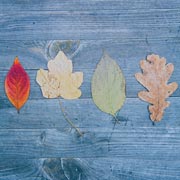 eaves and small, non-bulky flowers can be dried and flattened through the process of pressing. All that’s needed is the leaves and flowers and a thick book of paper sheets — a large sketch pad is perfect or, alternatively, sheets of unprinted newsprint or blotting paper. Manually place single flowers and leaves between the leaves of the paper and then place something large, flat, and heavy over the entire thing and leave it for anything from a couple of days to a couple of weeks. How long will depend on the type of leaves and flowers involved (and how dry and flat they were to begin with). Once ready, the flowers and leaves will be thin and dry, ready to use. They could, for example, be used individually as mementoes or bookmarks, or assembled with glue into ‘pictures’ via a collage, as explained earlier.
eaves and small, non-bulky flowers can be dried and flattened through the process of pressing. All that’s needed is the leaves and flowers and a thick book of paper sheets — a large sketch pad is perfect or, alternatively, sheets of unprinted newsprint or blotting paper. Manually place single flowers and leaves between the leaves of the paper and then place something large, flat, and heavy over the entire thing and leave it for anything from a couple of days to a couple of weeks. How long will depend on the type of leaves and flowers involved (and how dry and flat they were to begin with). Once ready, the flowers and leaves will be thin and dry, ready to use. They could, for example, be used individually as mementoes or bookmarks, or assembled with glue into ‘pictures’ via a collage, as explained earlier. Another creative activity involving leaves is simply to represent them in pencil, paint, or other media of a child’s choice. Encourage them to look carefully at the leaf’s shape and detail, so they can try to mimic them in drawn or painted form. Drawing and painting are highly useful skills for children to develop and mastering such skills will prove useful throughout their educational years. If you, as a parent, are good at drawing or painting, perhaps join in the activity too. By doing so, you can show your child what is possible with some close attention to detail and carefully placed lines and strokes. As you build up your own picture, perhaps explain how you are achieving the results, so they can learn from your approach. And — who knows — perhaps you’ll discover that you have a budding artist in the family!
Another creative activity involving leaves is simply to represent them in pencil, paint, or other media of a child’s choice. Encourage them to look carefully at the leaf’s shape and detail, so they can try to mimic them in drawn or painted form. Drawing and painting are highly useful skills for children to develop and mastering such skills will prove useful throughout their educational years. If you, as a parent, are good at drawing or painting, perhaps join in the activity too. By doing so, you can show your child what is possible with some close attention to detail and carefully placed lines and strokes. As you build up your own picture, perhaps explain how you are achieving the results, so they can learn from your approach. And — who knows — perhaps you’ll discover that you have a budding artist in the family!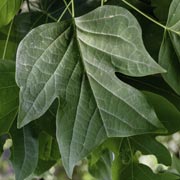
 Whether dried, painted, or simply picked as they are, leaves can also be made into other objects, characters, and so on. Some leaves can look like other items, for example, a particular type of tree (the Tulip Tree a.k.a. Yellow-Poplar) has individual leaves shaped rather like t-shirts! Children could look out for these and perhaps paint them in their favourite football team’s colours, draw in legs, arms and a head to make people and — hey presto — they’ve created a person! Similarly, there are several leaves shaped like hearts which, once painted in a suitable colour, can be useful when making greetings cards for birthdays or Valentine’s Day.
Whether dried, painted, or simply picked as they are, leaves can also be made into other objects, characters, and so on. Some leaves can look like other items, for example, a particular type of tree (the Tulip Tree a.k.a. Yellow-Poplar) has individual leaves shaped rather like t-shirts! Children could look out for these and perhaps paint them in their favourite football team’s colours, draw in legs, arms and a head to make people and — hey presto — they’ve created a person! Similarly, there are several leaves shaped like hearts which, once painted in a suitable colour, can be useful when making greetings cards for birthdays or Valentine’s Day.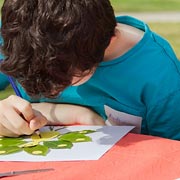 Another example of how leaves can represent other things can be illustrated by simple leaves like beech leaves. Each of these looks rather like the shape of a classic flower petal. So, perhaps a child can be encouraged to fan several around in a circle, almost tip to tip, to look like a big flower head. Children can paint the circle in the middle or glue a circle of coloured paper or wool there to represent the centre of the flower. And, if they start with a paper large enough, they could create several of these and make a picture of multiple flowers made of leaves. Use thin twigs, wool, or drawn crayon lines for stems and perhaps longer, thinner leaves to make the flowers’ leaves.
Another example of how leaves can represent other things can be illustrated by simple leaves like beech leaves. Each of these looks rather like the shape of a classic flower petal. So, perhaps a child can be encouraged to fan several around in a circle, almost tip to tip, to look like a big flower head. Children can paint the circle in the middle or glue a circle of coloured paper or wool there to represent the centre of the flower. And, if they start with a paper large enough, they could create several of these and make a picture of multiple flowers made of leaves. Use thin twigs, wool, or drawn crayon lines for stems and perhaps longer, thinner leaves to make the flowers’ leaves. The activity ideas above are just a starting point and there are plenty more that are possible with leaves. Whether it’s dried leaves painted, glued and varnished onto pebbles to form paperweights, dried leaves gently sprayed with perfume to form pot-pourri, or suspended leaves that form a mobile, the possibilities for leaf art are almost endless! We hope our ideas today inspire children to use their imaginations and make some beautiful creations — all with simple, humble leaves.
The activity ideas above are just a starting point and there are plenty more that are possible with leaves. Whether it’s dried leaves painted, glued and varnished onto pebbles to form paperweights, dried leaves gently sprayed with perfume to form pot-pourri, or suspended leaves that form a mobile, the possibilities for leaf art are almost endless! We hope our ideas today inspire children to use their imaginations and make some beautiful creations — all with simple, humble leaves. In addition to being fun and creative, these activities all support the Early Years Foundation Stage curriculum for under-fives. EYFS areas supported by the activities include:
In addition to being fun and creative, these activities all support the Early Years Foundation Stage curriculum for under-fives. EYFS areas supported by the activities include: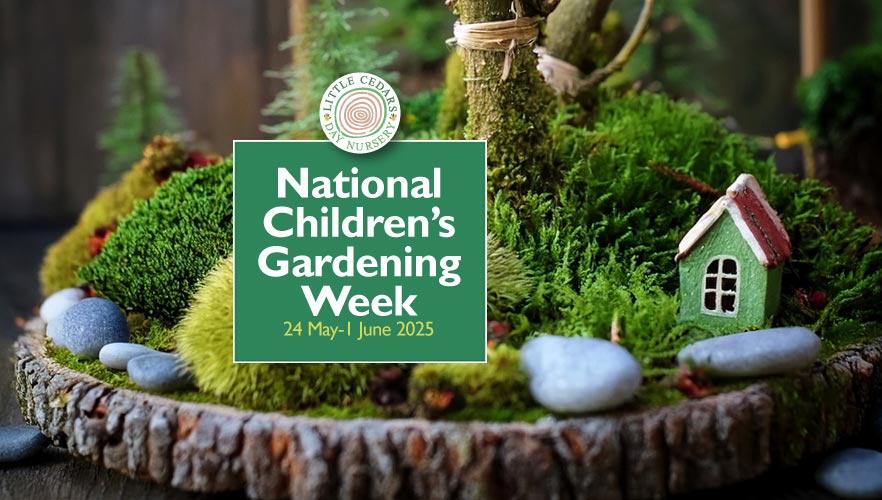
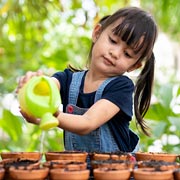 National Children’s Gardening Week is a wonderful annual event that’s designed to inspire children’s curiosity around growing plants and gardening-related activities. It takes place during what is typically a warm period of the year. That’s important because it means seeds and plants will grow faster and need minimal protective measures from inclement weather. Speedy growing results will appeal to little ones!
National Children’s Gardening Week is a wonderful annual event that’s designed to inspire children’s curiosity around growing plants and gardening-related activities. It takes place during what is typically a warm period of the year. That’s important because it means seeds and plants will grow faster and need minimal protective measures from inclement weather. Speedy growing results will appeal to little ones!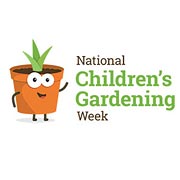 National Children’s Gardening Week coincides perfectly with the Spring Bank Holiday and May half-term school holiday, taking place from the 24th of May to the 1st of June 2025. It’s usually a lovely warm week and is perfect timing for children to make the most of the event and to maximise the many benefits of spending time around nature.
National Children’s Gardening Week coincides perfectly with the Spring Bank Holiday and May half-term school holiday, taking place from the 24th of May to the 1st of June 2025. It’s usually a lovely warm week and is perfect timing for children to make the most of the event and to maximise the many benefits of spending time around nature. National Children’s Gardening Week also raises money to support children in hospices through the national charity Greenfingers. They create inspiring gardens and beautiful outdoor spaces where hospice children with life-limiting conditions can play, rest, relax, and spend time with family and friends. Such outdoor spaces allow affected children to spend quality time away from the bedside in well-designed outdoor areas where they can enjoy all the benefits of fresh air and a natural environment.
National Children’s Gardening Week also raises money to support children in hospices through the national charity Greenfingers. They create inspiring gardens and beautiful outdoor spaces where hospice children with life-limiting conditions can play, rest, relax, and spend time with family and friends. Such outdoor spaces allow affected children to spend quality time away from the bedside in well-designed outdoor areas where they can enjoy all the benefits of fresh air and a natural environment.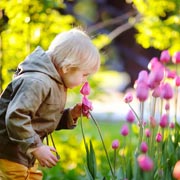 Children and families can take part at home as well as in participating schools, childcare settings, community groups, ‘outdoorsy’ retail outlets and even some National Trust properties.
Children and families can take part at home as well as in participating schools, childcare settings, community groups, ‘outdoorsy’ retail outlets and even some National Trust properties.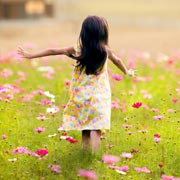 Sowing Wildflower Seeds
Sowing Wildflower Seeds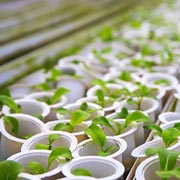 Herbs and some vegetables can be grown from seeds, cultivated, and harvested from simple flowerpots or yoghurt pots. They can also be ‘re-grown’ through various devious means that will fascinate children including under-fives. We wrote a whole post about that too, so take a look — it’s quite ingenious, is incredibly educational, and results in free food! What’s more, it can be done indoors.
Herbs and some vegetables can be grown from seeds, cultivated, and harvested from simple flowerpots or yoghurt pots. They can also be ‘re-grown’ through various devious means that will fascinate children including under-fives. We wrote a whole post about that too, so take a look — it’s quite ingenious, is incredibly educational, and results in free food! What’s more, it can be done indoors. 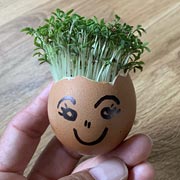 Another ‘indoor gardening’ activity is growing these comical ‘egg heads’. Grown simply from cress seeds, they can be grown in egg shells as shown, or another alternative would be yoghurt pots. When the cress is ready to be harvested and used in salads or as a garnish, the little characters can have a haircut!
Another ‘indoor gardening’ activity is growing these comical ‘egg heads’. Grown simply from cress seeds, they can be grown in egg shells as shown, or another alternative would be yoghurt pots. When the cress is ready to be harvested and used in salads or as a garnish, the little characters can have a haircut! 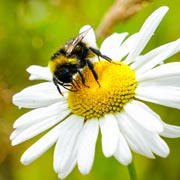 Another activity that children can get involved in for National Children’s Gardening Week is to create bee-friendly gardens. Our recent post about World Bee Day explains how to make a bee oasis (from where bees and pollinators can get a refreshing drink) and a bee-friendly garden.
Another activity that children can get involved in for National Children’s Gardening Week is to create bee-friendly gardens. Our recent post about World Bee Day explains how to make a bee oasis (from where bees and pollinators can get a refreshing drink) and a bee-friendly garden. 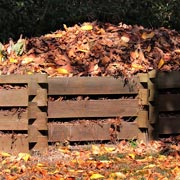 Plants love compost and so do minibeasts. So, another wonderful activity for children in National Children’s Gardening Week is to make homemade compost. Our dedicated
Plants love compost and so do minibeasts. So, another wonderful activity for children in National Children’s Gardening Week is to make homemade compost. Our dedicated Once the flowers are blooming outside, children can experiment with pressing flowers. Pressed flowers are a wonderful way for children to save flowers semi-permanently as keepsakes or to use as part of an art activity.
Once the flowers are blooming outside, children can experiment with pressing flowers. Pressed flowers are a wonderful way for children to save flowers semi-permanently as keepsakes or to use as part of an art activity.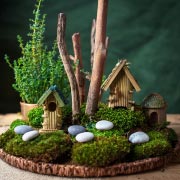 The youngest children will love this activity! Children will need some scavenged moss, pebbles, sticks, seashells and perhaps small pieces of driftwood from a beach. Children can then use these to transform the soil in a large pot or on top of a log into
The youngest children will love this activity! Children will need some scavenged moss, pebbles, sticks, seashells and perhaps small pieces of driftwood from a beach. Children can then use these to transform the soil in a large pot or on top of a log into 
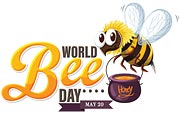 May’s World Bee Day is a wonderful and very worthwhile International event. It’s also one that’s perfect for children, including under-fives, to get involved in. Not only does it raise families’ awareness of the importance of bees and pollinators, but it’s also a great opportunity to introduce little ones to some of nature’s adorable little creatures and get them more interested in the natural world.
May’s World Bee Day is a wonderful and very worthwhile International event. It’s also one that’s perfect for children, including under-fives, to get involved in. Not only does it raise families’ awareness of the importance of bees and pollinators, but it’s also a great opportunity to introduce little ones to some of nature’s adorable little creatures and get them more interested in the natural world. 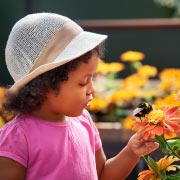 Children naturally take to planting seeds, tending seedlings as they grow, and watering plants and flowers. That’s great because it gives many opportunities for
Children naturally take to planting seeds, tending seedlings as they grow, and watering plants and flowers. That’s great because it gives many opportunities for 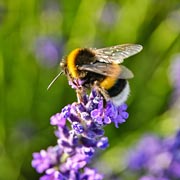 Wherever there are flowers, children will find bees, particularly if the flowers are brightly coloured and fragrant. A walk around the local neighbourhood, park, or natural open spaces will be both great exercise and an opportunity for little ones to spot some lovely bees and pollinators. Getting outdoors (appropriately supervised* and dressed) is beneficial to children in many ways, and a bee-spotting walk will be a simple way to introduce them to these important and cute little creatures. Can they spot a bumblebee? Can they spot a bee collecting nectar in their leg pouches (also known as pollen baskets or corbiculae)? Which
Wherever there are flowers, children will find bees, particularly if the flowers are brightly coloured and fragrant. A walk around the local neighbourhood, park, or natural open spaces will be both great exercise and an opportunity for little ones to spot some lovely bees and pollinators. Getting outdoors (appropriately supervised* and dressed) is beneficial to children in many ways, and a bee-spotting walk will be a simple way to introduce them to these important and cute little creatures. Can they spot a bumblebee? Can they spot a bee collecting nectar in their leg pouches (also known as pollen baskets or corbiculae)? Which 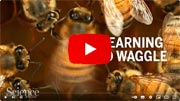
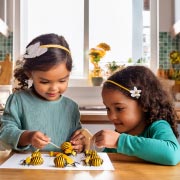 If the weather is unsuitable for outdoor activities, one of the easiest bee-related activities that children can take part in is making bee art. They can try drawing bumblebees, flowers, and hives with pencils, pens, or markers. Alternatively, they can get even more creative using paints or collages. Cutting up coloured tissue paper shapes and making bee-related images using appliqué is sure to be fun and impressive (child-safe scissors being used by parents or under super-close supervision). Parents can perhaps cut out any tricky shapes for the youngest children and then help guide them as they glue bee, flower, or hive elements into place.
If the weather is unsuitable for outdoor activities, one of the easiest bee-related activities that children can take part in is making bee art. They can try drawing bumblebees, flowers, and hives with pencils, pens, or markers. Alternatively, they can get even more creative using paints or collages. Cutting up coloured tissue paper shapes and making bee-related images using appliqué is sure to be fun and impressive (child-safe scissors being used by parents or under super-close supervision). Parents can perhaps cut out any tricky shapes for the youngest children and then help guide them as they glue bee, flower, or hive elements into place.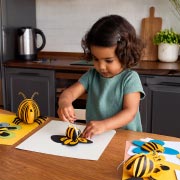 Bee art can be extended further by creating three-dimensional models and shapes. With a little help from parents or older siblings, even children under five can take part. They will enjoy sticking shaped paper or cardboard pieces and other recycled materials into place to form three-dimensional bees and flowers. Useful materials for such models could be things like corrugated card, tissue paper in various colours, coloured pipe cleaners, fabric, kitchen roll cores, paper plates and cups and, of course, coloured paints to decorate the final piece. Such creations can be as simple or complex as families like. This is a great activity to boost fine motor skills and hand-eye coordination!
Bee art can be extended further by creating three-dimensional models and shapes. With a little help from parents or older siblings, even children under five can take part. They will enjoy sticking shaped paper or cardboard pieces and other recycled materials into place to form three-dimensional bees and flowers. Useful materials for such models could be things like corrugated card, tissue paper in various colours, coloured pipe cleaners, fabric, kitchen roll cores, paper plates and cups and, of course, coloured paints to decorate the final piece. Such creations can be as simple or complex as families like. This is a great activity to boost fine motor skills and hand-eye coordination!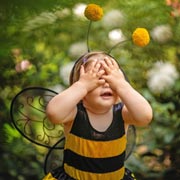 Children can get into bee-inspired fancy dress while doing their waggle dance! Striped clothes will help. Perhaps parents can help them make wings from card or material and shaped wire. Some antennae should not be too difficult to make from a headband, some pipe cleaners and some homemade pom-poms or foam balls from a craft shop. Children will love such creativity and the fun that ensues with friends once they’re all dressed up!
Children can get into bee-inspired fancy dress while doing their waggle dance! Striped clothes will help. Perhaps parents can help them make wings from card or material and shaped wire. Some antennae should not be too difficult to make from a headband, some pipe cleaners and some homemade pom-poms or foam balls from a craft shop. Children will love such creativity and the fun that ensues with friends once they’re all dressed up!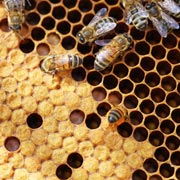 The bee-related activity ideas suggested in today’s post will be a fabulous way to introduce children to these magical little creatures, the wonderful work they do for us and the planet, and the measures little ones can take in their own lives to improve the plight of the natural world. The activities will also be fun and educational — indeed supporting many areas of
The bee-related activity ideas suggested in today’s post will be a fabulous way to introduce children to these magical little creatures, the wonderful work they do for us and the planet, and the measures little ones can take in their own lives to improve the plight of the natural world. The activities will also be fun and educational — indeed supporting many areas of 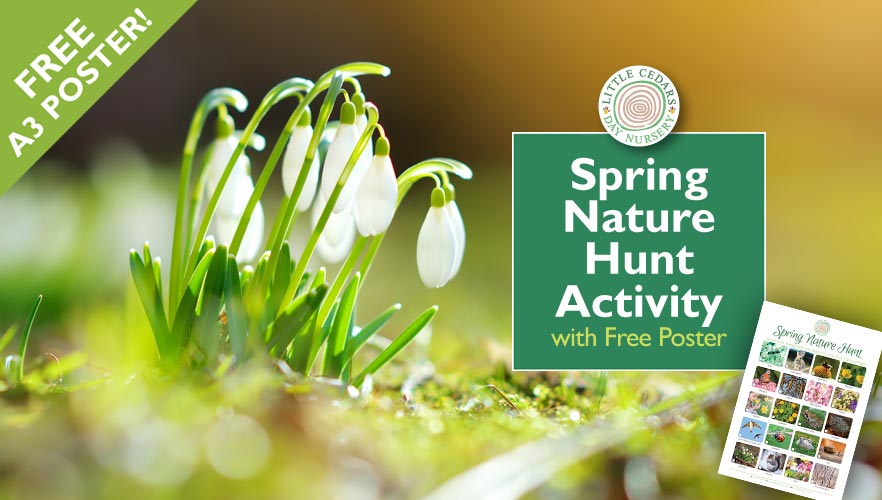
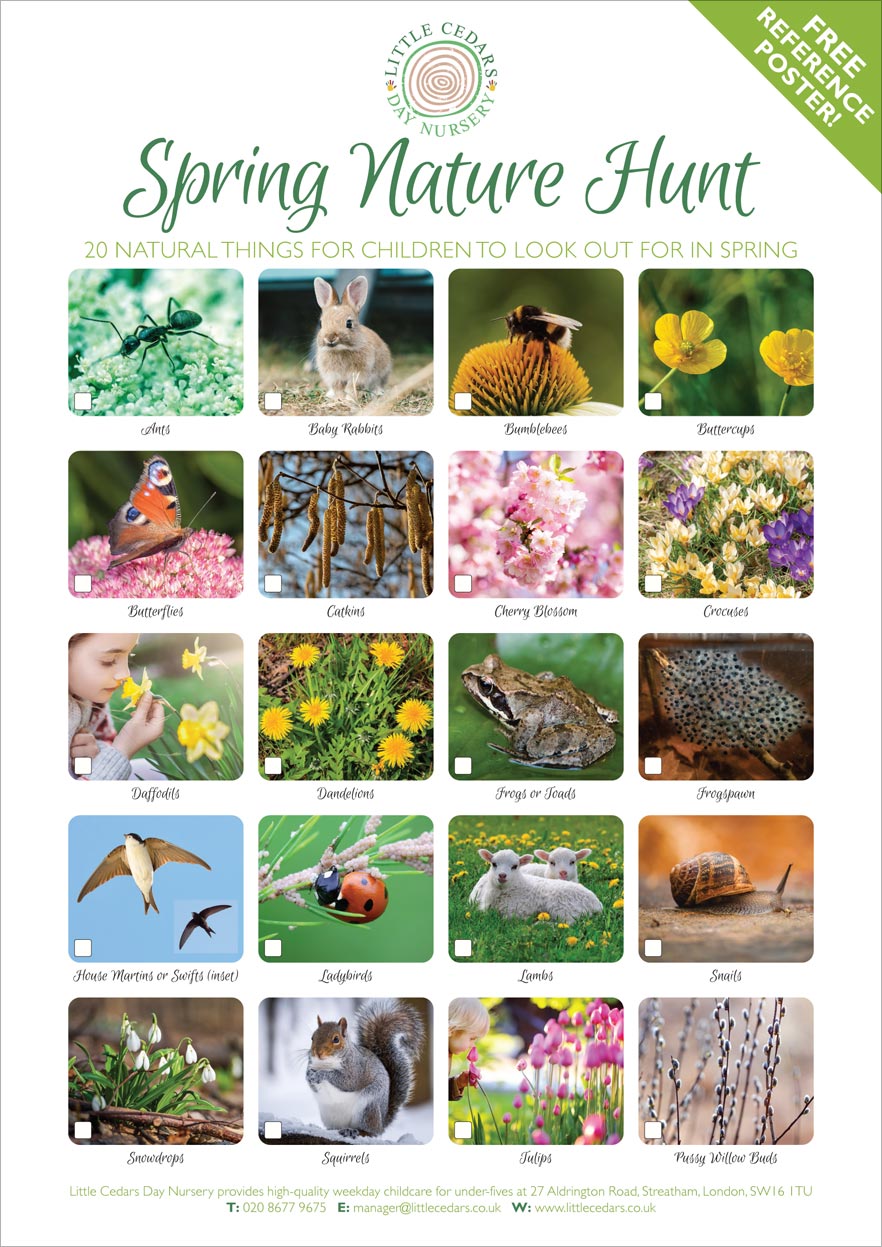
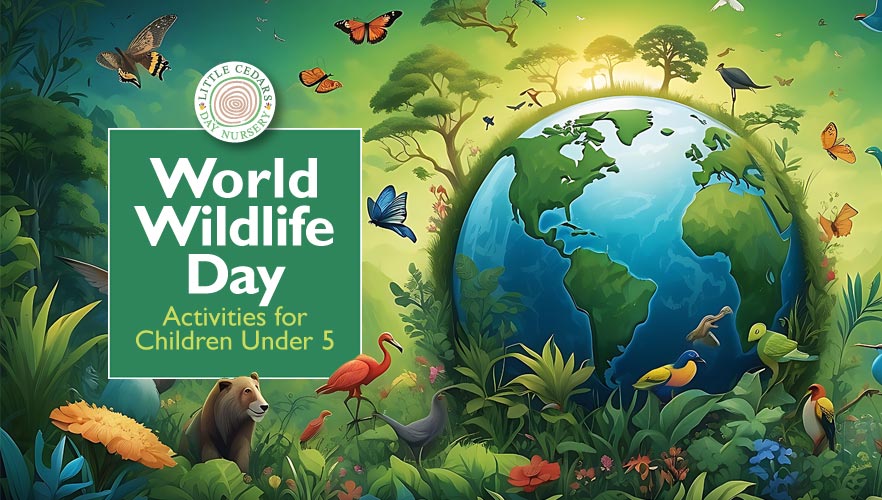
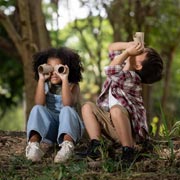 Getting outdoors is the best way to see wildlife, especially if your family lives near a park or the countryside. Rambles, picnics, and simple walks are all obvious options and, of course, wildlife sanctuaries are a good choice if you have one nearby. That said, while such outdoor options are amongst the best ways for children to connect with nature, sometimes they’re simply not possible. However, when that’s the case, there are plenty of other possibilities including bringing the wonders of wildlife into your nursery, home, or garden. Here are some engaging, age-appropriate activities that will allow children to take part in World Wildlife Day whatever their circumstances:
Getting outdoors is the best way to see wildlife, especially if your family lives near a park or the countryside. Rambles, picnics, and simple walks are all obvious options and, of course, wildlife sanctuaries are a good choice if you have one nearby. That said, while such outdoor options are amongst the best ways for children to connect with nature, sometimes they’re simply not possible. However, when that’s the case, there are plenty of other possibilities including bringing the wonders of wildlife into your nursery, home, or garden. Here are some engaging, age-appropriate activities that will allow children to take part in World Wildlife Day whatever their circumstances: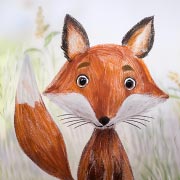 Most children naturally take to drawing, so encouraging them to draw wild animals, plants and birds will be a popular suggestion, especially around the time of World Wildlife Day. For example, they could try drawing British mammals like rabbits and squirrels, jungle animals like elephants and tigers, or sea creatures like dolphins and whales. To make it easier, perhaps give them some visual reference to inspire them. They could choose from a variety of media, be it pencils, crayons, paints, or collages — or something entirely different. Playdough or salt dough models are also an option. Children naturally love to create and, once complete, perhaps display their pieces to encourage future progress.
Most children naturally take to drawing, so encouraging them to draw wild animals, plants and birds will be a popular suggestion, especially around the time of World Wildlife Day. For example, they could try drawing British mammals like rabbits and squirrels, jungle animals like elephants and tigers, or sea creatures like dolphins and whales. To make it easier, perhaps give them some visual reference to inspire them. They could choose from a variety of media, be it pencils, crayons, paints, or collages — or something entirely different. Playdough or salt dough models are also an option. Children naturally love to create and, once complete, perhaps display their pieces to encourage future progress. Reading books about wildlife will introduce children to new animals and habitats. Great options for younger under-fives include ‘Dear Zoo’ by Rod Campbell and ‘Brown Bear, Brown Bear, What Do You See?’ by Bill Martin Jr. (author) and Eric Carle (illustrator). Also, of course, children and families have the option to tell each other made-up stories. They’re a great way to encourage creative thinking and can be approached in a number of different ways. For example, a parent could tell a story first to give the child an idea of
Reading books about wildlife will introduce children to new animals and habitats. Great options for younger under-fives include ‘Dear Zoo’ by Rod Campbell and ‘Brown Bear, Brown Bear, What Do You See?’ by Bill Martin Jr. (author) and Eric Carle (illustrator). Also, of course, children and families have the option to tell each other made-up stories. They’re a great way to encourage creative thinking and can be approached in a number of different ways. For example, a parent could tell a story first to give the child an idea of  Try making some simple bird feeders with your children. There are lots of easy ways to make them as outlined in our dedicated guide,
Try making some simple bird feeders with your children. There are lots of easy ways to make them as outlined in our dedicated guide, 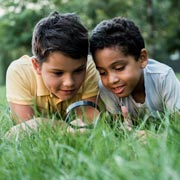 Create a simple scavenger hunt using pictures, words, or our free nature hunt sheets to encourage children to find different natural objects like leaves, feathers, and pine cones. This activity builds children’s observation skills, gives them deep insights into nature, and instils in them a better appreciation for the environment. Currently, free reference sheets are available for
Create a simple scavenger hunt using pictures, words, or our free nature hunt sheets to encourage children to find different natural objects like leaves, feathers, and pine cones. This activity builds children’s observation skills, gives them deep insights into nature, and instils in them a better appreciation for the environment. Currently, free reference sheets are available for  Engage children with easy science experiments, like
Engage children with easy science experiments, like 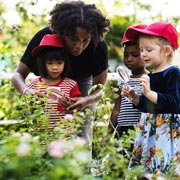 Spending time in nature or learning about wildlife isn’t just fun—it has incredible benefits for early childhood development. To harness such benefits, families can incorporate nature-based learning into children’s routines in a variety of ways. Examples include organising outdoor exploration sessions, setting up small wildlife observation areas, and using nature-themed storytelling to engage the young learners. Connecting children with nature:
Spending time in nature or learning about wildlife isn’t just fun—it has incredible benefits for early childhood development. To harness such benefits, families can incorporate nature-based learning into children’s routines in a variety of ways. Examples include organising outdoor exploration sessions, setting up small wildlife observation areas, and using nature-themed storytelling to engage the young learners. Connecting children with nature: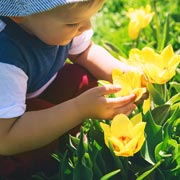 Incorporating wildlife into children’s activities doesn’t have to be limited to one day. Encouraging youngsters to notice the birds in the garden, look for insects on nature walks, or watch the changing seasons can gift them a lifelong love of nature. Parents and families can make wildlife observation a regular habit, perhaps by keeping a simple nature sketchbook where children can draw or glue in pictures of what they see, or by creating a wildlife corner at home with books, nature finds, and small child-safe plants. Even setting up a bird-watching station near a window can turn everyday moments into exciting learning opportunities. By celebrating World Wildlife Day, we can inspire the next generation of nature lovers—one little explorer at a time!
Incorporating wildlife into children’s activities doesn’t have to be limited to one day. Encouraging youngsters to notice the birds in the garden, look for insects on nature walks, or watch the changing seasons can gift them a lifelong love of nature. Parents and families can make wildlife observation a regular habit, perhaps by keeping a simple nature sketchbook where children can draw or glue in pictures of what they see, or by creating a wildlife corner at home with books, nature finds, and small child-safe plants. Even setting up a bird-watching station near a window can turn everyday moments into exciting learning opportunities. By celebrating World Wildlife Day, we can inspire the next generation of nature lovers—one little explorer at a time!

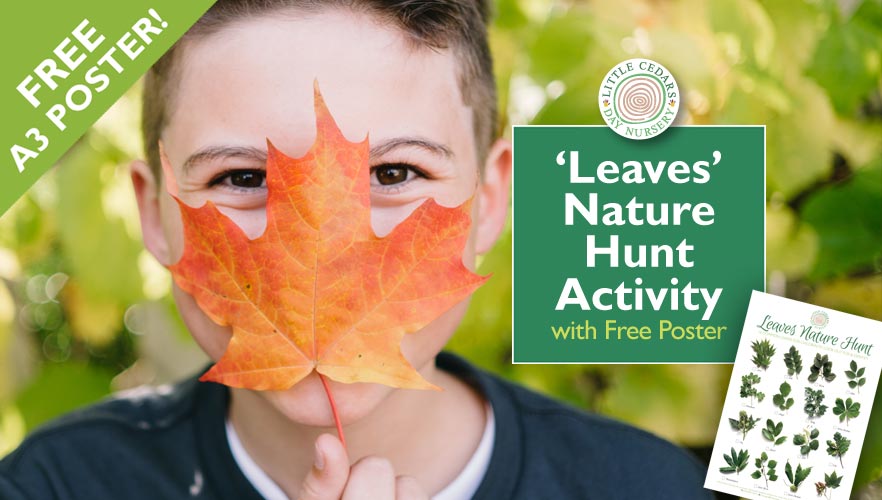
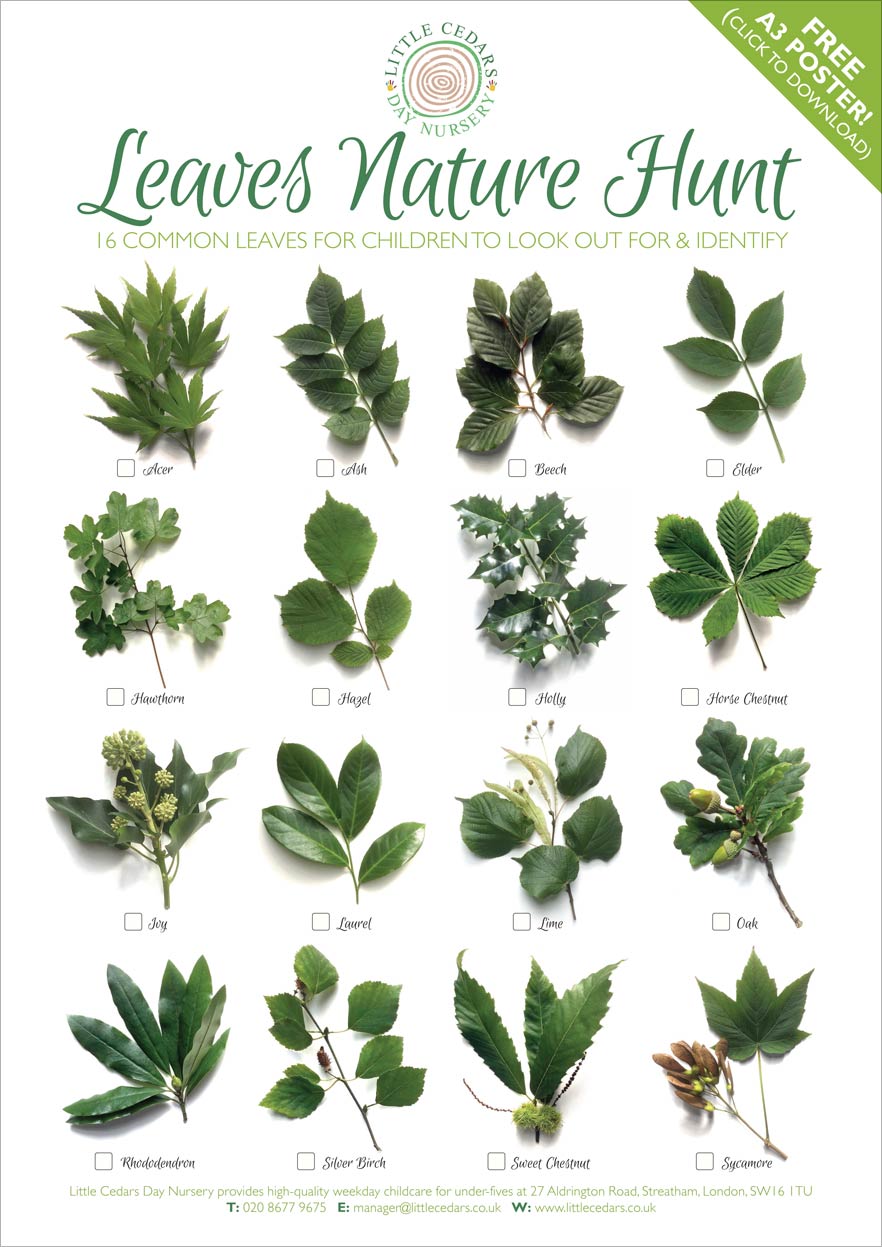
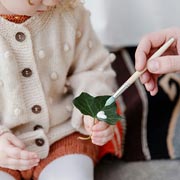
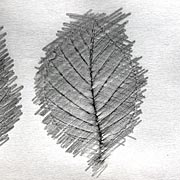
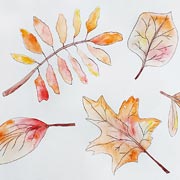
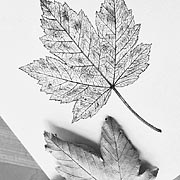

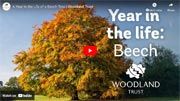
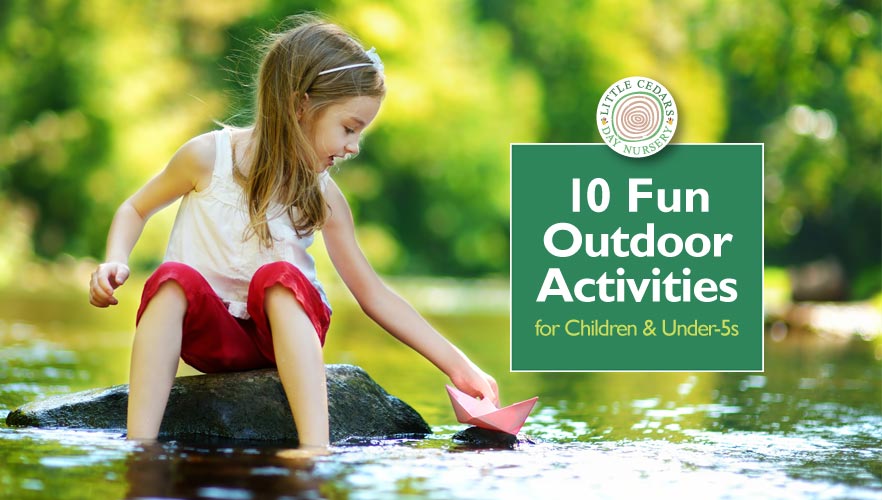
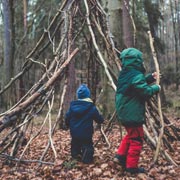 Home-made play dens are great fun both to construct and to use. Children will love constructing them, perhaps using fallen branches, sticks, or garden bamboo canes. If they show real ‘bush craft’ potential, they could even progress to covering them with large leaves, moss, fir tree fronds, or simply use a spare blanket or sheet from indoors. Once made, children will adore setting up camp, perhaps with cushions or soft moss, straw, or hay, used as a comfy base inside. Once built, their imaginations will run riot as they invent all kinds of games, role-play scenarios, and free-form play. This creative activity is such fun and has so much potential!
Home-made play dens are great fun both to construct and to use. Children will love constructing them, perhaps using fallen branches, sticks, or garden bamboo canes. If they show real ‘bush craft’ potential, they could even progress to covering them with large leaves, moss, fir tree fronds, or simply use a spare blanket or sheet from indoors. Once made, children will adore setting up camp, perhaps with cushions or soft moss, straw, or hay, used as a comfy base inside. Once built, their imaginations will run riot as they invent all kinds of games, role-play scenarios, and free-form play. This creative activity is such fun and has so much potential!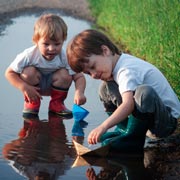 With a little help from an adult or using suitable reference from the Internet or a book, children will be able to
With a little help from an adult or using suitable reference from the Internet or a book, children will be able to 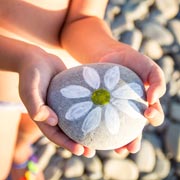
 Rocks, particularly the smooth pebble kind, are often magnets for children’s attention when they spot them outdoors. Parents and carers can encourage children to take their natural interest a few steps further by creating rock art and rock sculpture (using, of course, suitable rocks that are safe for them to use under supervision). Children will love painting rocks with patterns, flowers, or abstract designs and these can look hugely attractive. Rock sculptures are also something that children will love building, whether using painted rocks or natural ones. Scenes with multiple ‘towers’ of piled rocks look magical and children can even pretend these are part of their ‘castle’ or mark the boundaries of their kingdom and suchlike. Creating outdoors with rocks will be fun and creative, it’ll stimulate imaginations, and also hone art and motor skills.
Rocks, particularly the smooth pebble kind, are often magnets for children’s attention when they spot them outdoors. Parents and carers can encourage children to take their natural interest a few steps further by creating rock art and rock sculpture (using, of course, suitable rocks that are safe for them to use under supervision). Children will love painting rocks with patterns, flowers, or abstract designs and these can look hugely attractive. Rock sculptures are also something that children will love building, whether using painted rocks or natural ones. Scenes with multiple ‘towers’ of piled rocks look magical and children can even pretend these are part of their ‘castle’ or mark the boundaries of their kingdom and suchlike. Creating outdoors with rocks will be fun and creative, it’ll stimulate imaginations, and also hone art and motor skills. Children will love creating their own picnic, whether it’s in the garden, local park, or out in the countryside. It’s a multi-faceted activity where they can first help prepare the food and drink, help pack it in backpacks or a cool bag, and then settle somewhere pleasant outdoors. There, they can set up camp, perhaps with a nice soft blanket to sit on, and lay out their picnic feast. It’ll be a great spot, too, to relax with friends or family, or use as a base from which to embark on other outdoor games and activities. Picnics are also a great way to extend the time children can spend outdoors because they’ll be fed and watered outside too. Magical!
Children will love creating their own picnic, whether it’s in the garden, local park, or out in the countryside. It’s a multi-faceted activity where they can first help prepare the food and drink, help pack it in backpacks or a cool bag, and then settle somewhere pleasant outdoors. There, they can set up camp, perhaps with a nice soft blanket to sit on, and lay out their picnic feast. It’ll be a great spot, too, to relax with friends or family, or use as a base from which to embark on other outdoor games and activities. Picnics are also a great way to extend the time children can spend outdoors because they’ll be fed and watered outside too. Magical!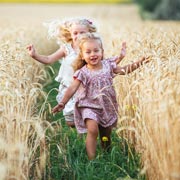 Introduce children to the concept of rambling. It’s a term that also sounds much more interesting than ‘walking’ in any case, and is a great excuse to get little ones out and about, for example, in the countryside, local park, or green space. Rambling out in nature is good for children (and adults) and also presents lots of exciting opportunities for adventure for little ones. Whether it’s a fallen log that children can try to walk along, tree stumps that they can balance on, branches they can try to hang from by their arms, or little brooks and ditches that they can jump across, rambles can be wonderful adventures for children — under adult supervision, of course. They’re also great ways to stimulate imaginations as children can pretend they’re explorers, pirates, hobbits, and so on.
Introduce children to the concept of rambling. It’s a term that also sounds much more interesting than ‘walking’ in any case, and is a great excuse to get little ones out and about, for example, in the countryside, local park, or green space. Rambling out in nature is good for children (and adults) and also presents lots of exciting opportunities for adventure for little ones. Whether it’s a fallen log that children can try to walk along, tree stumps that they can balance on, branches they can try to hang from by their arms, or little brooks and ditches that they can jump across, rambles can be wonderful adventures for children — under adult supervision, of course. They’re also great ways to stimulate imaginations as children can pretend they’re explorers, pirates, hobbits, and so on.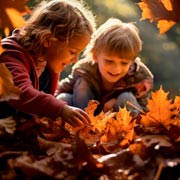
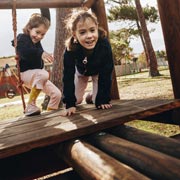 Children will also hugely enjoy making and then competing in their own obstacle race. Encourage them to set up a route through a suitable clearing, forest, field or park. Get them to mark boundaries and the course route with natural objects (sticks, rocks, stones, jumpers, etc.). Include obstacles like branches to jump over, tree trunks to run around, ditches or other similar hazards to jump over, and so on. Perhaps they can race several times and you, as the supervising adult, can time them. Whoever wins could be presented with a prize of some kind, whether it’s a purchased toy or simply a gold star sticker. It’ll be a great chance for children to let off steam, keep fit, and hone balance, coordination and motor skills.
Children will also hugely enjoy making and then competing in their own obstacle race. Encourage them to set up a route through a suitable clearing, forest, field or park. Get them to mark boundaries and the course route with natural objects (sticks, rocks, stones, jumpers, etc.). Include obstacles like branches to jump over, tree trunks to run around, ditches or other similar hazards to jump over, and so on. Perhaps they can race several times and you, as the supervising adult, can time them. Whoever wins could be presented with a prize of some kind, whether it’s a purchased toy or simply a gold star sticker. It’ll be a great chance for children to let off steam, keep fit, and hone balance, coordination and motor skills. Little ones are usually familiar with the concept of photographs, especially in today’s age, with cameras on every smartphone and tablet. And, of course, there are still simple stand-alone cameras available, whether digital or using traditional film. Either way, suggest that children — with care not to break or damage the device — take photos of natural things and scenery when they’re outdoors. There could even be a competition to see who can take the best photo of a flower, insect, or scene of some kind. This activity will stimulate their creativity, encourage an understanding of scientific concepts like light and shadows, and give them a sense of responsibility as they (hopefully) look after the camera or smartphone itself. Prizes or stickers could perhaps be available for the most successful and appealing shots.
Little ones are usually familiar with the concept of photographs, especially in today’s age, with cameras on every smartphone and tablet. And, of course, there are still simple stand-alone cameras available, whether digital or using traditional film. Either way, suggest that children — with care not to break or damage the device — take photos of natural things and scenery when they’re outdoors. There could even be a competition to see who can take the best photo of a flower, insect, or scene of some kind. This activity will stimulate their creativity, encourage an understanding of scientific concepts like light and shadows, and give them a sense of responsibility as they (hopefully) look after the camera or smartphone itself. Prizes or stickers could perhaps be available for the most successful and appealing shots.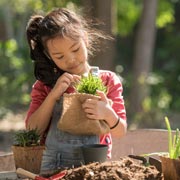 Children will love having their own mini garden. Whether it’s a small area in the household garden or simply some flowerpots or grow-bags on a windowsill or patio, there is always somewhere a child can grow plants (or even vegetables or herbs) in a household. All they need is some light, soil, and water, after all. And, of course, the care and attention of someone to look after them. Children will naturally be fascinated by the concept of growing plants, flowers, herbs, vegetables, or fruit from seeds or seedlings. Tending to them and seeing them successfully grow will also give them a sense of responsibility, achievement, and perhaps even of empathy. Children can learn so much from tending to plants.
Children will love having their own mini garden. Whether it’s a small area in the household garden or simply some flowerpots or grow-bags on a windowsill or patio, there is always somewhere a child can grow plants (or even vegetables or herbs) in a household. All they need is some light, soil, and water, after all. And, of course, the care and attention of someone to look after them. Children will naturally be fascinated by the concept of growing plants, flowers, herbs, vegetables, or fruit from seeds or seedlings. Tending to them and seeing them successfully grow will also give them a sense of responsibility, achievement, and perhaps even of empathy. Children can learn so much from tending to plants. Our final outdoor activity idea for children is wildlife spotting. Whether it’s
Our final outdoor activity idea for children is wildlife spotting. Whether it’s 